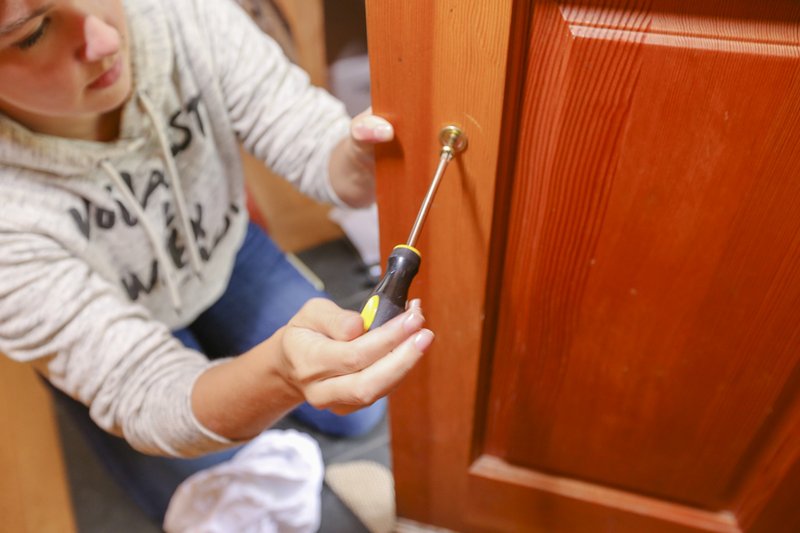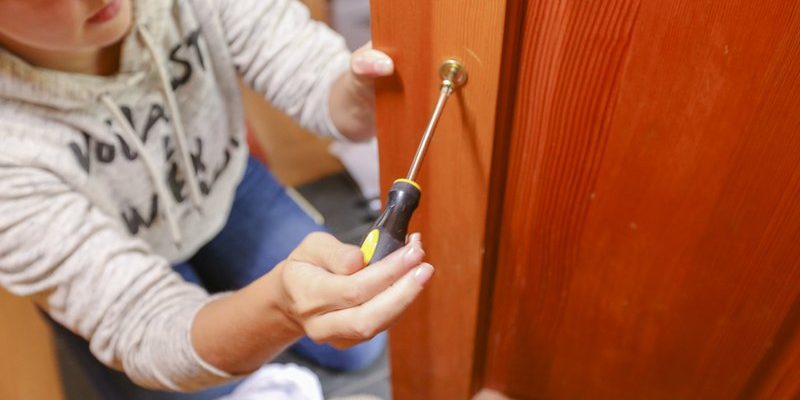
Replacing a latch follower isn’t as daunting as it sounds. Even if you’re not a DIY expert, you can handle this repair with just a few basic tools and some patience. Whether you have a simple knob lock or a more complex lever handle, understanding this part can help you restore your door’s functionality without calling in the pros. Let’s break it down step by step.
What Is a Latch Follower?
A latch follower is a small but vital component of your door’s locking mechanism. Essentially, it’s what allows the latch to extend and retract, helping to keep your door both secure and function properly. When you turn the doorknob or handle, the latch follower moves and lets the latch bolt slip into the strike plate. If this part is damaged, your door might not latch properly, leading to issues like doors that won’t close or close but don’t secure.
You might be wondering how to tell if your latch follower needs replacing. Common signs include difficulty turning the doorknob, a door that swings open on its own, or a feeling that the knob is loose or not engaging. If you’ve noticed any of these symptoms, it’s time to take a closer look.
Gather Your Tools
Before diving into the repair, it’s essential to make sure you have the right tools at your disposal. Here’s a quick checklist of what you’ll need:
- Screwdriver: A common Phillips or flathead screwdriver depending on your door hardware.
- Replacement latch follower: Ensure it matches the specifications of your door lock. You can often find these at a hardware store or online.
- Tape measure: To measure the existing latch follower and ensure you get the right size.
- Pliers: These can help with stubborn screws or components.
- Cleaning cloth: For any dust or debris that might get in the way.
Having these tools ready will streamline your repair process. Trust me—it’s much easier to complete the job when you have everything within reach.
Removing the Old Latch Follower
Now that you have your tools, it’s time to get to work. Here’s how to remove the damaged latch follower step by step:
1. Unscrew the Doorknob: Start by removing the screws from the doorknob. You may need to support the knob with one hand while you unscrew with the other. Once it’s off, you can set it aside.
2. Take Out the Lock Mechanism: With the doorknob removed, you’ll typically see a cover plate or a mechanism holding the latch follower in place. Remove any screws securing this part and pull it out gently.
3. Locate the Latch Follower: The latch follower is usually positioned inside the lock mechanism. Carefully remove it, noting how it fits in place; this will help when installing the new one.
4. Clean the Area: Before you insert the new latch follower, take a moment to clean the area. Dust and debris can hinder the performance of your new component.
Taking your time here is vital. A gentle touch helps avoid any additional damage to the lock or door.
Installing the New Latch Follower
With the old latch follower removed, it’s time to install the new one. Here’s a straightforward process to follow:
1. Insert the New Latch Follower: Position the new latch follower in the same spot as the old one. If you’re unsure how it fits, double-check any instructions that came with it or consult its packaging.
2. Reassemble the Lock Mechanism: Put the lock mechanism back into place, ensuring all parts align correctly. Secure it with screws as needed.
3. Reattach the Doorknob: Finally, reattach the doorknob by aligning it with the latch and securing it with screws. Make sure everything feels snug and works smoothly.
4. Test the Door: Before you declare victory, give the knob a few turns. Open and close the door to ensure the latch is functioning properly. You should hear a satisfying click, indicating it’s secured.
Getting these steps right ensures your door will work smoothly again. A little effort can go a long way in restoring functionality!
Testing Your Repair
After you’ve installed the new latch follower, testing it is crucial. Here’s how to ensure everything functions as it should:
– Check the Latch: Close the door and turn the knob. You should feel the latch catching and securing in place. If it’s still not working, you may need to reevaluate the installation or check if the latch follower is the correct fit.
– Secure the Door Open and Closed: Open and close the door repeatedly to ensure it latches without any sticking or resistance. This is a good moment to adjust the strike plate if it doesn’t align well.
– Listen for Sounds: Pay attention to any unusual sounds when engaging the latch. A loose or rattling knob indicates that something might not be seated correctly.
Testing can save you from future headaches. If everything checks out, you’re all set!
Common Problems and Troubleshooting
After replacing the latch follower, you might encounter some issues. Here are a few common problems and how to troubleshoot them:
1. Door Won’t Latch: If the door still won’t latch, double-check the alignment of the strike plate. Sometimes, a simple adjustment can solve the issue.
2. Loose Knob: If the doorknob feels wobbly, ensure all screws are tight. Over time, these can loosen, causing the knob to malfunction.
3. Difficulty Turning the Knob: If turning the knob feels stiff, it could be a sign of debris in the locking mechanism. A little lubricant can often alleviate this.
By addressing these problems early, you can maintain the longevity of your door’s function and avoid more extensive repairs down the line.
When to Call a Professional
Sometimes, the repair process might feel overwhelming. If you’re still having trouble after your best efforts, it might be time to call a professional. Here’s when to consider expert help:
– If you notice significant damage to the door frame or a complex locking mechanism that seems beyond your skills.
– When repeated repairs fail to fix the problem, indicating a deeper underlying issue.
– If the door locks are part of a bigger security system that requires specialized knowledge.
Remember, there’s no shame in asking for help. A professional can often identify and fix issues more efficiently, saving you time and potential frustration.
In conclusion, replacing a damaged latch follower in an interior door is a straightforward task that many can tackle with some basic tools and patience. By understanding the components and following the steps, you can restore your door to proper working order. With your door functioning smoothly, you’ll enjoy peace of mind knowing your space is secure again. Happy repairing!
